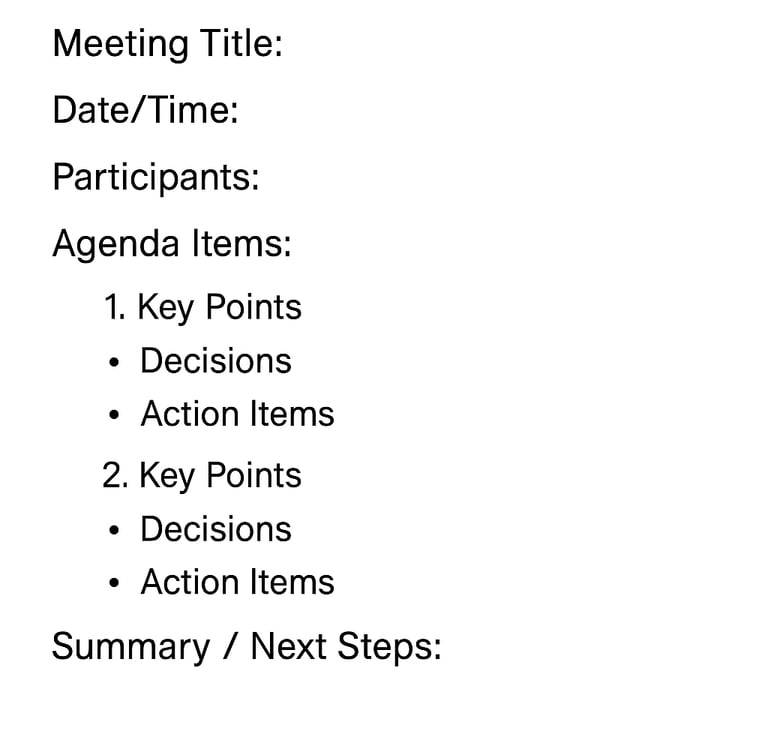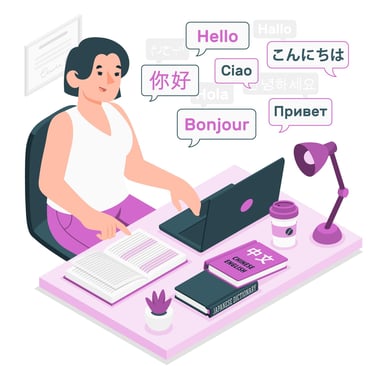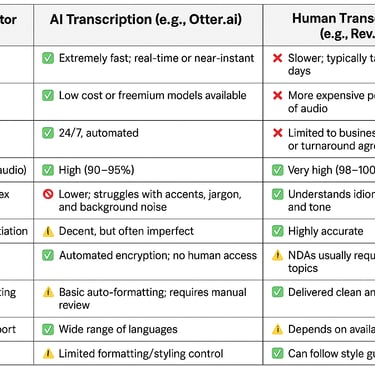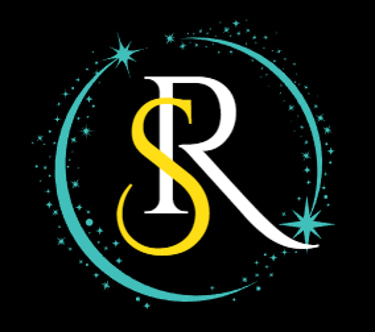How to Efficiently Take Meeting Notes Without Missing a Word: A Researcher's Guide
Struggling to capture every detail during research meetings? This guide reveals efficient, accurate ways to take meeting notes—without missing a word.
6/5/20253 min read


Introduction
In today’s fast-paced academic and professional environments, taking meeting notes efficiently is not just a good habit—it’s a necessity. For researchers, note-taking can be the difference between a breakthrough and a missed opportunity. However, juggling active participation and detailed documentation often leads to incomplete notes or lost insights.
This article explores proven strategies and tools that help you take meeting notes without missing a word, including AI-driven solutions, human transcription services, and smart workflows tailored for research teams.
Why Efficient Meeting Note-Taking Matters for Researchers
Researchers often attend meetings packed with complex discussions, data reviews, project planning, and brainstorming. Without a streamlined note-taking process, key points can slip through the cracks, leading to:
Miscommunication within research teams
Poor documentation of decisions or tasks
Inefficient follow-ups
Delayed progress on research milestones
1. Use AI-Powered Transcription Tools (Example: Otter.ai)
If you’re still scribbling on paper or typing manually, it’s time to upgrade.
🔍 Otter.ai is one of the most popular AI transcription tools, trusted by researchers, educators, and professionals alike. It offers:
Real-time transcription
Automatic speaker identification
Searchable transcripts
Highlighting and summarization tools
Integration with Zoom and Google Meet
These features make Otter.ai a powerful choice for recording complex research discussions or project planning sessions.
⚠️ However, while tools like Otter.ai are extremely helpful, they still require manual verification and light editing. Background noise, accents, and technical terminology can lead to transcription errors. Taking a few minutes to clean up the AI-generated notes can significantly enhance their accuracy and value.
2. Use Human Transcription Services (Example: Rev.com)
For meetings that require 99–100% accuracy—such as grant meetings, published interviews, or legal research documentation—human transcription is often the better choice.
👨💼 Rev.com is a leading human transcription service offering:
99%+ accuracy
Fast turnaround (as little as 12 hours)
Secure and confidential handling
Options for captions, timestamps, and verbatim transcripts
Although it’s more expensive than AI-based solutions, the quality and formatting you get from human transcription are ideal for formal records and publications.
🤖 AI vs. 👨💼 Human Transcription: Pros and Cons
3. Record with Permission, Then Focus on the Discussion
Instead of frantically typing, ask for permission to record the meeting. This allows you to:
Stay fully engaged
Review missed details later
Create precise, verbatim transcripts
Bonus Tip: Always follow ethical standards and get informed consent before recording.
4. Structure Notes Using a Template
Templates save time and keep notes organized. Use a simple structure:
You can build these into tools like Notion, Evernote, or Google Docs.
5. Assign a Note-Taking Role or Use Shared Docs
If you're working with a team:
Assign one person as the note-taker
Use a shared document for real-time collaboration
Collaborative note-taking reduces individual stress and improves accuracy.
6. Summarize and Share Action Items Immediately
After each meeting:
Review and clean up notes while the information is still fresh
Highlight action items and assign them clearly
Share the cleaned-up notes with all participants
Timely follow-up improves accountability and team performance.
7. Integrate With Research Project Management Tools
Connect your meeting notes with task tracking tools:
Trello – Convert discussion points into actionable cards
Asana – Create and assign tasks directly from notes
Notion – Centralize project documentation and workflows
This creates a seamless system from conversation to execution.
Final Thoughts
Efficient meeting note-taking isn’t about typing faster—it’s about using the right tools, strategies, and systems to stay focused and organized. Whether you use an AI tool like Otter.ai for speed or a human service like Rev.com for accuracy, the key is to capture insights without missing a word.
🛠️ Pro Tip: Even the best AI tools require a human touch. Always review and refine transcripts for clarity and accuracy—especially when sharing with collaborators, supervisors, or funding bodies.








SARAVA PRO
Expert virtual assistance for your business needs.
Contact us
Focus
+91 9952642607


